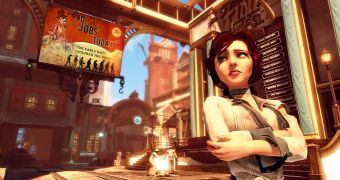The news that Irrational is closing down certainly took everyone by surprise, especially the many talented people who were laid off after shipping the much acclaimed BioShock Infinite.
The whole affair is covered in depth by Polygon, who talked to various sources at Irrational and compiled a summary of the lengthy development process, revealing many of its intricacies and Ken Levine’s unique creative process.
Development for Infinite started right after BioShock was done, but the new creation went through a very diluted pre-production process that made its dev cycle run from 2009 to 2013. Ideas were coming and going all day long, and among the many concepts lost until its masters figured out where they want to take the upcoming game were two multiplayer modes that nobody knew about until now.
The actual development work initially started with the two multiplayer modes, as some progress could be achieved there before having a clear roadmap of how the single player campaign will play out.
The first multiplayer mode was called Border Control, and it worked similar to how a tower defense game would, being flavorfully loaded with satire similar to old-time political cartoons and complete with bigoted stereotypes. It was a game within a game, set in the BioShock Infinite universe and served to indoctrinate the children of Columbia with racist stereotypes so they could grow up to be model citizens that would carry on Father Comstock’s work.
The second one was a bit more familiar as far as first person shooters go, but it also had some interesting long term goals attached to it. Dubbed Spec Ops, it would consist of four player matches cooperatively fought against AI opponents, with a lot of randomized areas and loot.
Players would use the various items they found to improve their characters, and the plans were to constantly evolve the battlefield and eventually to tell the story of two warring factions, slowly unveiled by players during their sessions, most probably The Founders and the Vox Populi.
Over time, as progress on the single player part of the game was dwindling, more and more ideas were thrown into the game and then scrapped, and the game was constantly changed and reworked to no avail.
That’s when BioShock 2’s Creative Director Jordan Thomas stepped in, moving the multiplayer team into improving the core game’s gunplay by using their accumulated experience with combat systems.
The two multiplayer modes were eventually completely scrapped, even though they both seemed to serve the narrative and to be tied in to BioShock Infinite’s excellent narrative.

 14 DAY TRIAL //
14 DAY TRIAL //